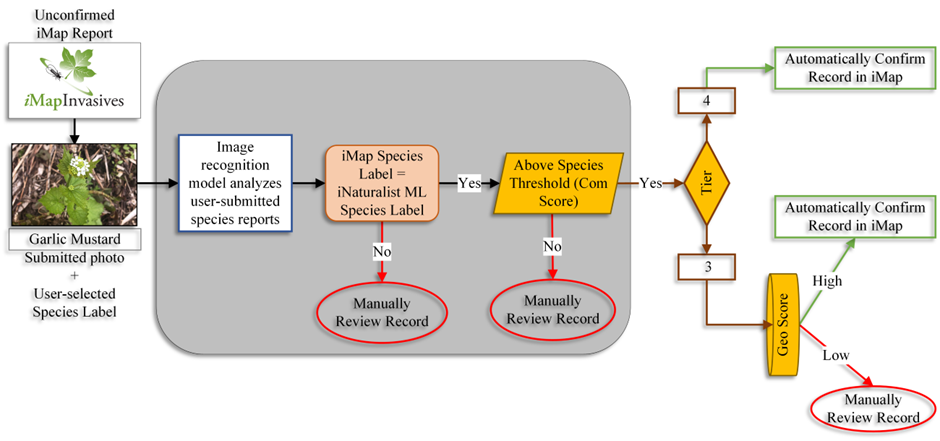Worms, worms, everywhere!
- Mitchell O'Neill

- Sep 28, 2021
- 4 min read
Updated: Mar 1, 2024
Have you seen these guys wriggling around in your yard, slithering like snakes?
Video by Madeline Maitino, Summer 2021 iMapInvasives Intern from SUNY-ESF
Jumping worms are a very different beast than your typical earthworm, and have been reported at an alarming rate this year - over 300 iMap reports, emails, and telephone calls to iMapInvasives this summer. Jumping worms are non-native earthworms in the Amynthas or Metaphire genus (both in the Megascolecidae family) that pose severe threats to our soil and plant communities here in the Northeast:
“Jumping worms, a group of species originally from Asia, are invasive species that alter alter soil qualities and make it inhospitable for some plants and animals. They do this by consuming the upper organic layer of soil, which leaches nutrients and erodes the ground. This makes it hard for many plants (including garden plants) to grow and threatens even the most well-tended lawns.”
- Asian Jumping Worms: A Homeowner's Guide (Bezrutcyk et al. 2021)
When did jumping worms get here?
Jumping worms are native to Asia, but were brought to North America a least by the nineteenth century. See this excerpt from the New York Times from July 2020:
"In the last ice age, glaciers scraped down to bedrock, so in glaciated areas like New England, the Upper Midwest and Canada, no native earthworm species have existed for at least 11,000 years, roughly when the most recent glacial period ended. Any earthworms present there — including the common night crawler — are of [Eurasian] origin, presumably brought over by settlers as part of ship ballast material or in soil around plant roots.
Asian earthworms were first identified in the United States in the 1870s, in California, Dr. Görres said. Anecdotal reports suggest they migrated to the East Coast with Washington’s famed cherry trees, and moved on to Baltimore and then Massachusetts in the 1930s and to New York, near Albany, in the 1940s.
"But in terms of scientists noting a wider invasion, it’s been the last 10 or 15 years," said [Bradley M. Herrick, plant ecologist and research program manager at the University of Wisconsin-Madison Arboretum]
Jumping worms have been spreading across the northeast, from Maine down to Maryland, out the Wisconsin, and even in Canada. Thanks to natural resource professionals, researchers, and the help of citizen scientists using iMapInvasives and iNaturalist, we have been able to track their distribution - see below for our live webmap:
Jumping worm observations in iMapInvasives and iNaturalist
Green points: Confirmed presence records of Jumping worm in NY iMapInvasives
Blue pins: Reported sightings of Jumping worm in iNaturalist
Are there any records where you live?
Do you see any areas with blue iNaturalist records, but no green iMap points?
Help us fill these data gaps by reporting to iMapInvasives!
Where can you find jumping worms?
Jumping worms can be found in compost, yards, gardens, leaf litter, and mulch, in addition to soils in natural areas.
Look for the distinctive “coffee ground” soil texture caused by jumping worm castings.
Jumping worms live near the surface of the ground, in the topmost organic layer.
You can even use a mixture of water and mustard seed to draw worms up to the surface for a more comprehensive sampling (see page 2 of this handout from Cornell Cooperative Extension for details)

Keep in mind that Jumping worms exist at different life stages throughout the year - see the graphic to the left (McCay et al. 2020).
The adult stage is the most visible; you may be able to find adult jumping worms in the soil through October.

Photo from iMapInvasives record 1163304, showing the distinctive pale clitellum (collar) near the head of the worm.
How can you tell the difference between jumping worms and other earthworms?
The easiest way to tell is their distinctive snake-like wriggling behavior in the video above. Compare to the slower expand-and-contract motions used by other earthworms (video here).
You can also tell by the milky-white collar, or “clitellum”, as shown in the photo submitted with iMap record 1163304 photo above. Compare this to the raised, pinkish clitellum much more toward the middle of the worm for typical earthworms (video here).
What can I do?
For individual worms - you can dispose of worms and casings by solarizing (sealing them inside a Ziploc bag and placing it in the sun), or by using alcohol or vinegar before placing in the garbage.
For infestations - Researchers are still exploring our best options for managing jumping worm - at this time, there is no recommended management technique that is known to be effective and feasible for managing populations of jumping worms. In the meantime, we are focusing on monitoring & spread prevention:
Help us monitor the distribution of jumping worms. Check for jumping worms in your area, and report records to iMapInvasives. Don't find any? Submit a not-detected record!
Prevent further spread. Don't use jumping worms as bait when fishing, take prevention measures when obtaining new soil or sharing plants, and more. See Asian Jumping Worms: A Homeowner's Guide for more specific guidance!
________________________________________________
Check out this presentation on Jumping worm given by Dr. Annise Dobson, Postdoctoral Researcher at the Yale School of the Environment; part of the JWORM working group.
Learn more:
Learn more from: Asian Jumping Worms: A Homeowner's Guide
Distribution in iMap: imapinvasives.natureserve.org
Reporting observations in iMap: www.nyimapinvasives.org/report-an-invasive
JWORM working group: http://www.nyisri.org/research/jworm-2/




